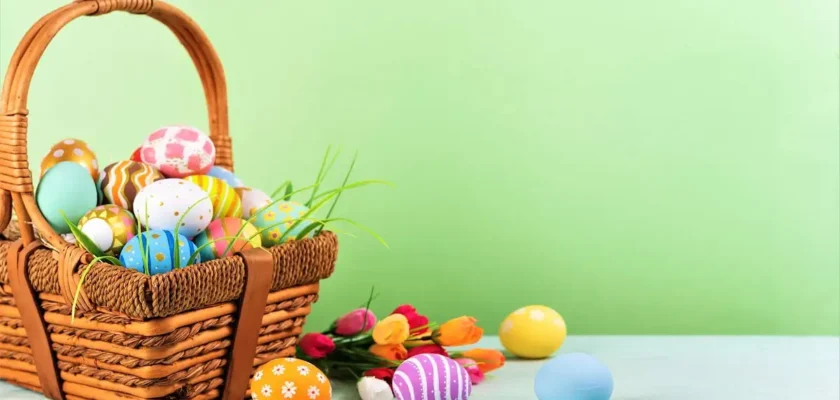Easter is a major religious and cultural event millions worldwide observe. It commemorates Jesus Christ’s resurrection and represents hope, rebirth, and fresh beginnings. The Easter basket, a receptacle with exceptional value filled with colorful eggs, candy, and gifts, is an essential aspect of Easter traditions.
Wicker, one of the many materials used to make these baskets, has a timeless charm reflecting Easter’s essence. This blog will examine wicker Easter Baskets’ history, craftsmanship, versatility, and continuing appeal.
The Wicker’s Roots And Early Use
Wicker weaving originated in ancient civilizations, with evidence of its use in Egypt, Assyria, and Persia. Its early forms used natural fibers like reed and rattan to make baskets and furniture. The term “wicker” comes from the Old English word “Wiccan,” which means “to bend or turn.”
Wicker weaving extended across continents, eventually reaching Europe in the Middle Ages. By the nineteenth century, wicker had become famous for furniture and decorative goods, like Easter baskets.
The Craftsmanship Of Wicker Easter Baskets
Wicker Easter baskets require trained artisans with a thorough understanding of the materials and weaving procedures. Natural plant materials like rattan, willow, bamboo, or reed typically make wicker. Artisans harvest these materials and then prepare them for weaving.
Because the materials are malleable, talented hands can create elaborate patterns and designs.
These techniques ensure the baskets’ robustness and durability while exhibiting the artisan’s originality. Although contemporary production processes have made mass production possible, handcrafted wicker Easter baskets remain a popular choice for people who value the craftsmanship and individuality of each item.
Versatility In Design: From Classic To Contemporary
One of the reasons for wicker Easter baskets’ continued popularity is their creative adaptability. With their iconic shapes and patterns, traditional designs can generate a sense of nostalgia. These baskets symbolize a bygone period, recalling simpler times and treasured family reunions.
On the other hand, wicker artisans have embraced contemporary design trends, producing a diverse selection of shapes, colors, and sizes. Modern wicker Easter baskets, with their unique designs and finely woven decorations, cater to a wide range of interests while retaining the traditional charm that has made them famous.
Sustainability And Eco-Friendly Easter baskets
As environmental consciousness rises, people increasingly seek eco-friendly options in their daily lives, including holiday customs. This trend aligns with using sustainable and renewable materials in manufacturing wicker Easter baskets.
Wicker is biodegradable and less environmentally impacted than plastic or metal baskets. Furthermore, the wicker’s resilience enables these baskets to reuse year after year, reducing the need for disposable alternatives.
The Symbolism Of Easter Baskets
Easter baskets contain profound symbolism that extends beyond their ornamental and functional use. These baskets, frequently filled with colorful eggs, candy, and gifts, are firmly entrenched in Easter symbolism and its ideas of new life, hope, and renewal. Let us look into the rich symbolism of Easter baskets:
New Life And Rebirth
The link of Easter baskets with new life and rebirth is essential to their symbolism. The design of the basket, which commonly resembles a nest, represents a safe and caring environment for new life to emerge.
This symbolism corresponds to the Christian belief in Jesus Christ’s resurrection, central to Easter celebrations. The eggs in the basket symbolize new life and the hope of renewal, similar to Jesus’ resurrection after his crucifixion.
Fertility And Spring
Many parts of the world celebrate Easter during the spring when creation comes alive with flowers in full bloom and newborn animals. Ancient pagan ceremonies, which marked the arrival of spring and fertility, trace the origin of eggs in Easter baskets.
In many cultures, eggs have long been associated with fertility and renewal, making them an essential aspect of Easter symbolism.
Joy And Anticipation
Easter baskets, especially those created for children, elicit excitement and anticipation. The Easter Bunny said to fill their baskets with snacks and gifts, eagerly awaited by children.
Hunting for hidden Easter eggs adds to the excitement and anticipation, representing the joy of discovery and the rewards of pursuing fresh beginnings.
Community And Sharing
Easter baskets are frequently shared among family members and acquaintances, establishing community and togetherness. Giving and receiving Easter baskets symbolizes sharing joy, love, and blessings throughout this holiday. It also reminds people to show kindness and give to others.
Spiritual Awakening
Easter is a time of spiritual reflection and rebirth for many Christians. Easter basket symbolism, with their representation of new life and hope, corresponds to the spiritual awakening and rejuvenation that accompany the celebration of Christ’s resurrection.
It is a reminder of the transformational power of faith and the possibility of a new beginning.
Tradition And Continuity
Families frequently pass down Easter baskets as beloved traditions through generations. Filling and exchanging Easter baskets promotes continuity and connection to one’s cultural and familial history.
The practice of Easter baskets fosters family relationships and produces lasting memories as families gather to celebrate Easter and share in the season’s joy.
Passing Down The Art Of Wicker Weaving
The preservation of cultural traditions and craftsmanship is critical for the survival of heritage. As technology and modernization affect many elements of life, the skill of wicker weaving faces challenges in remaining relevant.
On the other hand, dedicated artists, cultural organizations, and communities have realized the significance of handing this traditional craft to future generations. Organizers hold workshops, apprenticeships, and cultural events to safeguard the survival of the wicker weaving skill.
Wrapping Up
The preservation of cultural traditions and craftsmanship is critical for the survival of heritage. As technology and modernization affect many elements of life, the skill of wicker weaving faces challenges in remaining relevant.
On the other hand, dedicated artists, cultural organizations, and communities have realized the significance of handing this traditional craft to future generations. Organizers hold workshops, apprenticeships, and cultural events to safeguard the survival of the wicker weaving skill.

